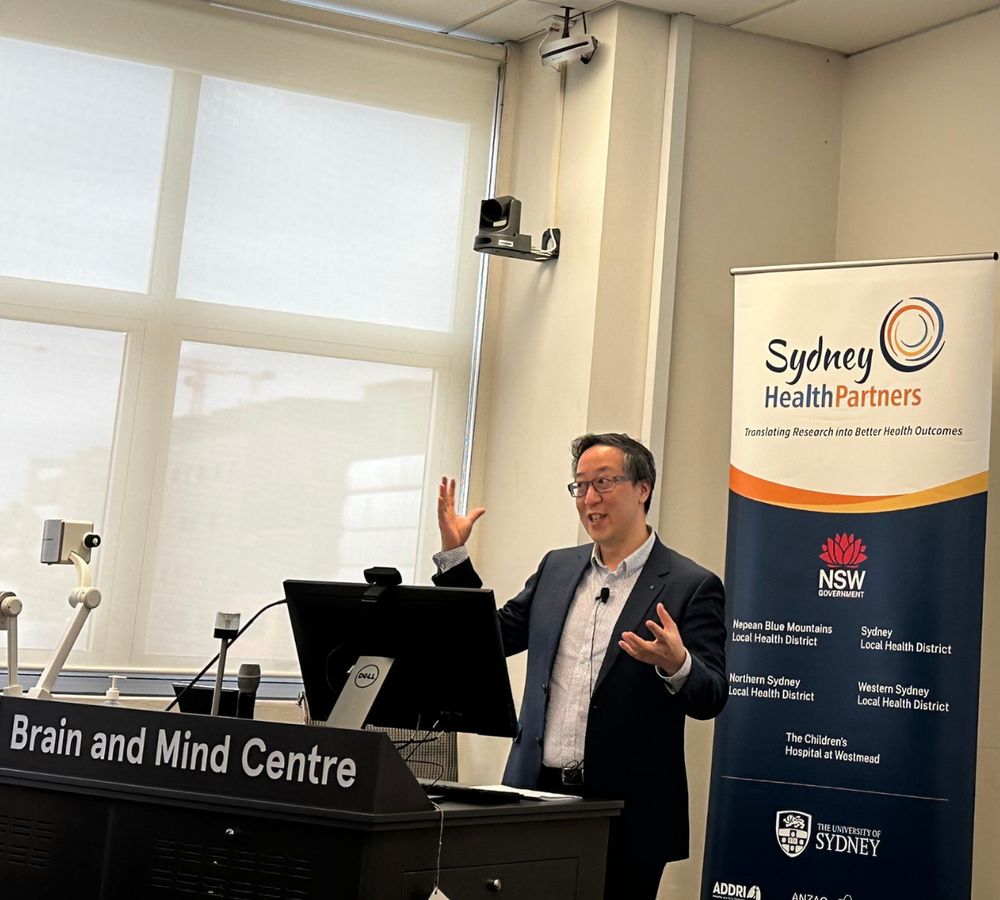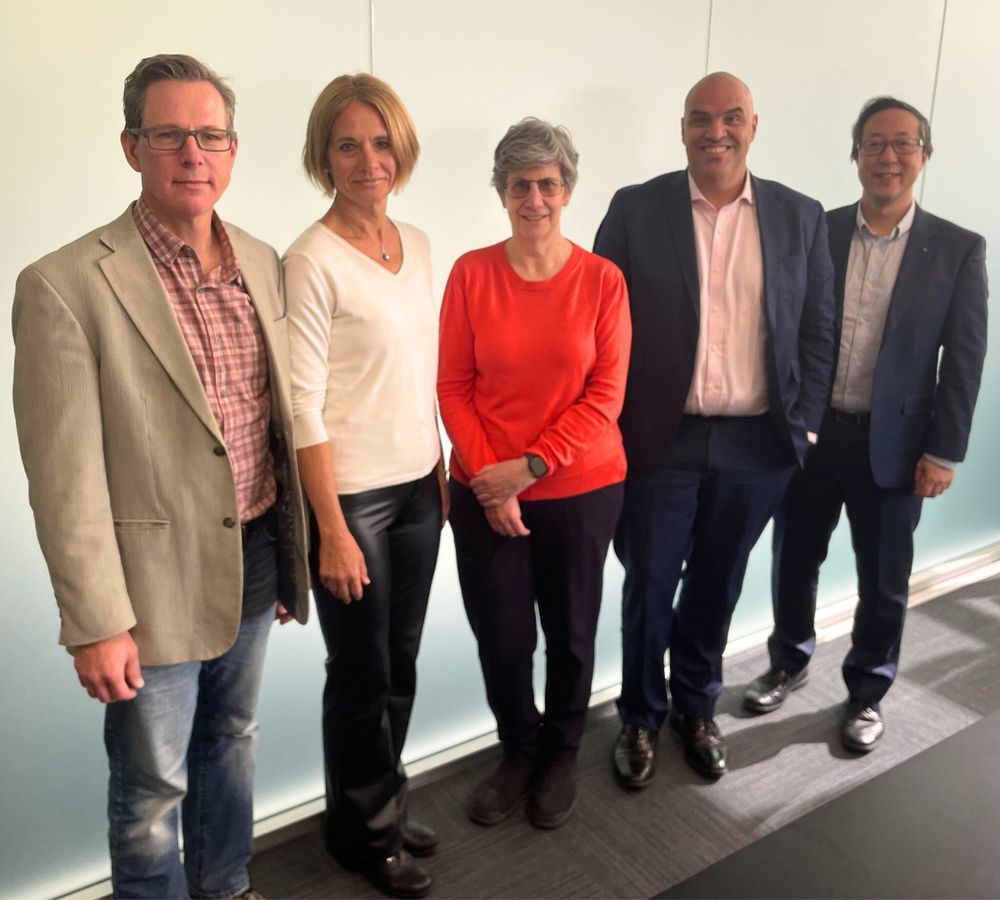Please repost: we are recruiting a postdoc for a project in my lab on genes and environment in autism
02.10.2025 01:25 — 👍 1 🔁 5 💬 0 📌 0

Should the Autism Spectrum Be Split Apart?
Many clinicians and scientists agree that spectrum has become too broad. Question for me really is how to split, and what are the objectives? www.nytimes.com/2025/10/01/h...
02.10.2025 00:43 — 👍 3 🔁 0 💬 0 📌 0
Says a lot about the state of popular science reporting that some techbro doofus can pretend he's going to be immortal and that will grab more headlines than "Hey we have a gene therapy that slows the advance of Huntington's by 75%," or "We gengineered a pothos into a living air purifier."
29.09.2025 20:21 — 👍 1663 🔁 371 💬 1 📌 0
Thank you Erica!
27.09.2025 19:03 — 👍 1 🔁 0 💬 0 📌 0
thank you
26.09.2025 23:46 — 👍 0 🔁 0 💬 0 📌 0
Last but definitely not least is our Neurodiverse Advisory Committee (NAC) consisting of autistic citizens and scientists. In partnership with autismtreeproject.org we have assembled the NAC to provide us with the stakeholders perspective on autism research!
26.09.2025 23:45 — 👍 0 🔁 0 💬 0 📌 0
We will also investigate how environmental factors influence clinical outcome of genes in ASD. Samples of many thousands are needed to identify G. Capturing the effects of GxE requires sample sizes of millions. Juicy preliminary data will be posted soon to medrxiv. It takes a village, come join us!
26.09.2025 23:40 — 👍 0 🔁 0 💬 1 📌 0

As a novel approach to causal inference, we will use collider effects to find genetic evidence to SUPPORT a causal role of environmental exposure. If E has a strong effect that is uncorrelated with G in the population, genes will explain LESS of the variance in the explosed group!
26.09.2025 23:32 — 👍 0 🔁 0 💬 1 📌 0

Our 2022 paper in NG illustrates one example: the observed association of parental age with ausism consists of a mixture of causal pathway E → de novo mutation → ASD; and noncausal pathway Parental age ← polygenic score → ASD
26.09.2025 23:27 — 👍 0 🔁 0 💬 1 📌 0

We will use a multi-pronged approach to causal inference using data on G and E in >2 million people, including association, MR and GxE exploring the interplay of exposures with rare and common variation that contributes to ASD, and we will rigorously evaluate rGE in family and population
26.09.2025 23:15 — 👍 0 🔁 0 💬 1 📌 0

THE major challenge in epidemiological studies of the environment in autism is the pervasive passive correlation of genes and environment (rGE) that happens in the population, also known horizontal pleiotropy. There are causal effects to be found, but we need to separate correlation from causation
26.09.2025 23:05 — 👍 1 🔁 0 💬 1 📌 0

Despite False Claims, Trump Funnels Millions Into Credible Autism Research
We are proud to be one of the 13 projects funded by the NIH Autism Data Science Initiative. Our project: "Elucidating the Interplay of Genes and Environment in Autism Using Genomic and Exposure Data from Large Populations" 🧵https://www.nytimes.com/2025/09/26/health/autism-research-trump-kennedy.html
26.09.2025 22:52 — 👍 21 🔁 1 💬 5 📌 2

Advisory Committee on Immunization Practices (ACIP) - September 19, 2025 – Day 2 of 2
YouTube video by Centers for Disease Control and Prevention (CDC)
Today's ACIP meeting had a presentation on the genetics of myocarditis following COVID vaccine based on Whole exome sequencing of 50 cases. See time stamp 2:26 www.youtube.com/live/_9ChY9S...
19.09.2025 21:42 — 👍 1 🔁 1 💬 0 📌 0
Pfff, big deal. My social media accounts are powered by edibles
15.09.2025 19:56 — 👍 2 🔁 0 💬 1 📌 0
If it’s not an exaggeration, and if the shoe fits, wear it. Worst case scenario, someone might actually read your paper
01.09.2025 18:00 — 👍 0 🔁 0 💬 0 📌 0
This is it. I cannot explain it, but this is it. This is how -and why- we should be doing science
30.08.2025 10:36 — 👍 53 🔁 3 💬 9 📌 0

Bad ass mom of the year 🤘. This was NOT an easy coffee ride. This was the Saturday Cadence Cyclery ride in SD.
16.08.2025 19:36 — 👍 2 🔁 0 💬 0 📌 0
Tahoe Zen
09.08.2025 00:35 — 👍 3 🔁 1 💬 0 📌 0


Great turnout!
Decoding Genetics of Autism
Speakers:
Prof Jonathan Sebat - UCSD
Prof Lilia Lakoucheva - UCSD
Dr. Alan Ma - Children’s Hosp Westmead,
Prof. Katrina Williams - @MonashUni
Hosted by BMC/Child Neurodevelopment team @adamguastella.bsky.social
11.06.2025 01:32 — 👍 6 🔁 2 💬 1 📌 0
I doubt that there is a single family in America that hasn’t benefitted directly from the NIH.
28.07.2025 17:37 — 👍 4879 🔁 617 💬 67 📌 25
Developmental neurobiologist and human organoids aficionado. Associate Prof. @USCStemCell. Director @USC CIRM ASCEND Shared Resource Lab. Mama^2. Immigrant 🇮🇹.
https://quadratolab.usc.edu/
https://ascend.usc.edu/
Computational Biologist. Mostly in English, sometimes in French. #NoPasaran
Originator of the Media Literacy Theory of Chge, baker of award-winning Cougar Gold Cheese Coins, and fortunate family partner of talented musicians, a statistician, theoretical physicist and ball-chasing pup. My views may not reflect those of my employer.
Scientific illustrator and wildlife artist.
Former scientist - biologist
Commissions: lazaroillustration@gmail.com
Prints store: https://www.inprnt.com/gallery/javi_lazaro/
Web: https://www.lazaroillustration.com/
Human artist. No AI art.
Epidemiologist. Professor Emerita. Blue in Arizona, forged in the Burgh.
When you’re going through hell, keep going. (Churchill)
1elizabethtjacobs1@gmail.com
@defendpublichealth.bsky.social
https://www.defendpublichealth.org
Public health experts resisting harmful policies, fighting disinformation, and defending public health from within.
Not official CDC—but close enough for transmission.
Proudly #AltGov
Tips? signal altCDC.99, email altCDCtips@proton.me or DM
An independent, nonprofit academic research institution at the forefront of transforming biomedical research to advance genomic science and precision medicine.
We are at the forefront of #mentalhealth & #neuroscience #research. We collaborate across industries & disciplines to find answers to global #health challenges.
EPIGENETIC HULK SMASH PUNY GENOME. MAKE GENOME GO. LOCATION: NOT CENTROMERE, THAT FOR SURE
Covering health care @ProPublica. Signal: 347-549-0332. Email: annie.waldman@propublica.org. (Also #COYS)
Hamilton lab at CHOP/UPenn. Intestinal epithelium, organoids, PTGR, regenerative medicine, IBD
We study the genetics of Alzheimer’s Disease through genotyping and sequencing technologies
Check out our most recent publications and blog ⬇️
https://www.penn-ngc.org/
Physician-Scientist and Attending Physician at the University of Pennsylvania and Children's Hospital of Philadelphia studying how #diet and #metabolism influence #immune #health and #inflammatory #disease.
Web: https://www.med.upenn.edu/hilllab/
Advancing the health of children by turning scientific discovery into medical innovation.
A genomics cat, sometimes Christopher H. Browne Professor of Biology at Penn. All posts my opinion only.
Pediatrician and scientist studying rare diseases at Univ. of Pennsylvania & The Children's Hospital of Philadelphia
Cardiologist, geneticist, and gene editor. Author of #TheCRISPRGeneration and #GenomeEditingAPracticalGuide











